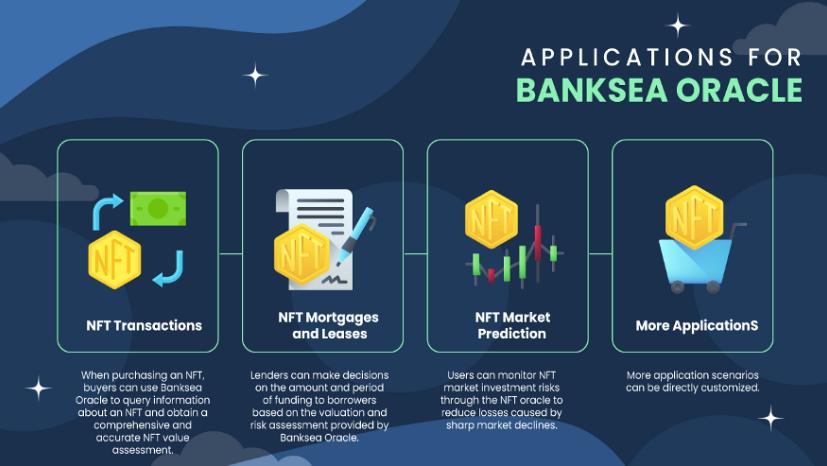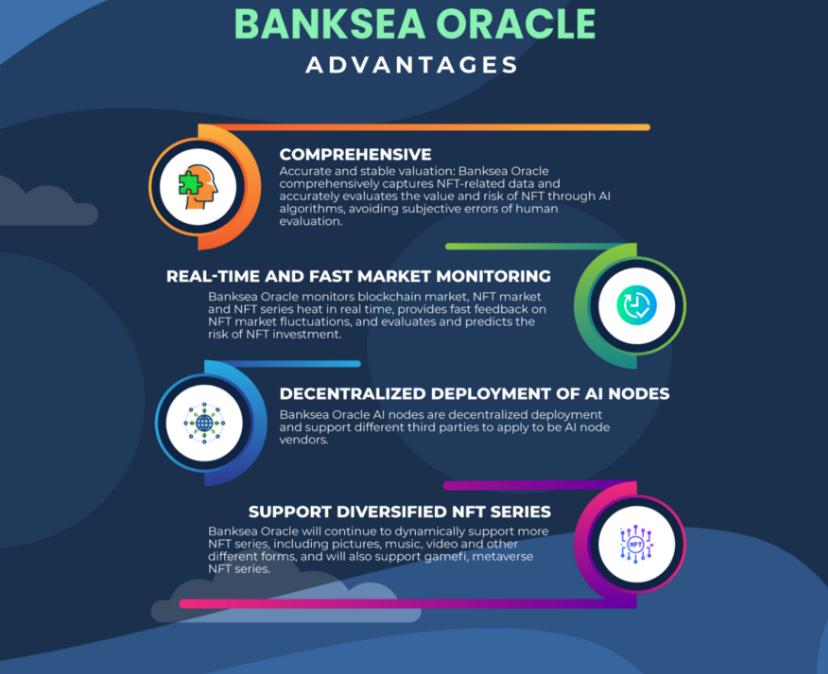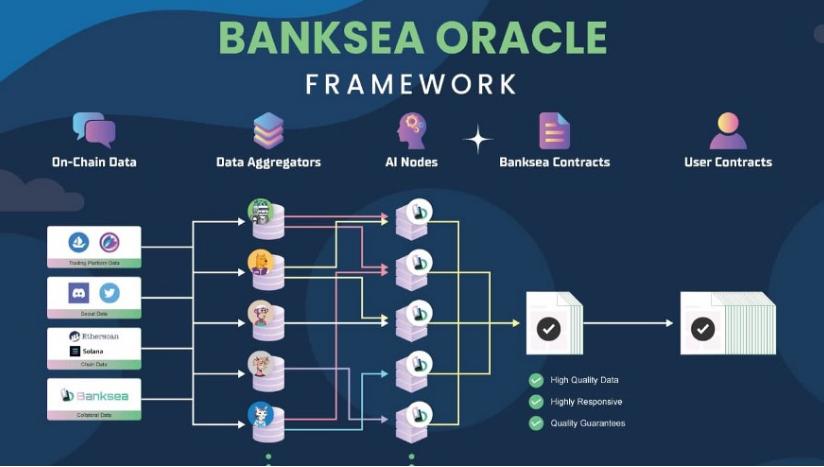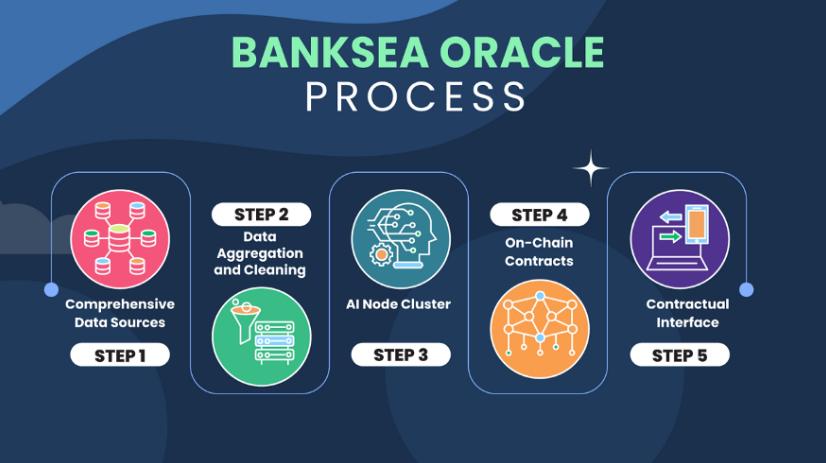Analyzing the operational mechanism of Banksea Oracle and the potential application scenarios of NFT oracles
Overview
The global demand for virtual art pieces (NFTs) is continuously growing. However, the lack of an on-chain interface capable of accurately assessing the value of NFTs has resulted in the trading volume of the NFT market still far from reaching that of the DeFi market. Banksea Oracle is a decentralized NFT oracle that provides data through off-chain Oracle AI nodes, delivering accurate valuation and risk assessment of NFTs to the blockchain and community. Banksea Oracle has released a beta version in the Solana ecosystem, with five AI nodes distributed globally to ensure stable and secure NFT bidding.

NFT Oracle Application Scenarios
Potential Application Scenarios of NFT Oracles:
- NFT Trading: Buyers can use the oracle to query information about the NFT when selecting it, obtaining comprehensive and accurate NFT value assessments.
- NFT Collateral and Leasing: Lenders can make decisions on the amount and duration of funding provided to borrowers based on the valuation and risk assessment provided by the oracle.
- NFT Market Prediction: Users can monitor NFT market investment risks through the NFT oracle to reduce losses caused by sudden market declines.
- More application scenarios can be customized directly.

Advantages
- Comprehensive, Accurate, and Stable Valuation: Banksea Oracle comprehensively captures NFT-related data and accurately assesses the value and risk of NFTs through AI algorithms, avoiding subjective errors in human assessments.
- Real-time and Rapid Market Monitoring: Banksea Oracle monitors blockchain trends, NFT trends, and the popularity of NFT series in real-time, quickly reflecting fluctuations in NFT markets and assessing investment risks.
- Decentralized Deployment of AI Nodes: Banksea Oracle AI nodes are decentralized, supporting different third parties to apply to become AI node providers.
- Support for Diverse NFT Series: Banksea Oracle will continuously and dynamically support more NFT series, including images, music, videos, and will also support NFT series from gamefi and the metaverse.

Framework
Banksea Oracle consists of three parts: AI node cluster, on-chain contracts, and contract interfaces.
- AI Node Cluster: Implements NFT data crawling, NFT feature extraction, and AI model computation.
- On-chain Contracts: Aggregates prices provided by distributed AI nodes to offer final NFT prices and risk assessments.
- Contract Interfaces: Connects with the NFT ecosystem and projects, supports custom development, and allows users to query individual NFTs.

Process
- Data Aggregation and Cleaning
Real-time monitoring and crawling of market data, NFT trading markets, social communities, and NFT data on ETH and SOL chains provide data support for NFT valuation.
- Data Aggregation and Cleaning
Aggregates NFT data from various series, cleans it, and extracts multi-dimensional NFT feature data.
- AI Node Cluster
Utilizes the collected NFT data to build an automated feature generation module, constructing real-time NFT features, including: NFT trading features, NFT series features, author profiles, seller profiles, social features, and market trend features, providing real-time feature support for AI algorithms. Based on advanced artificial intelligence algorithms, it learns real-time NFT features, constructs NFT valuation models, and monitors the market prices of NFTs in real-time. Valuations for 90+ NFT series are gradually being launched, covering both ETH and SOL networks. The algorithm model supports modular upgrades to optimize more series and achieve more accurate valuations. The underlying structure ensures the decentralized nature of the data, and the distributed multi-node deployment guarantees that the NFT oracle can continue to operate even if any single AI node experiences a failure.
- On-chain Contracts
Uses on-chain aggregated data to send data to the data requesters. Each oracle sends data to the on-chain smart contract, which removes outliers and provides reasonable data to the data requesters. The advantage of on-chain aggregated data is that the data content can undergo multiple reviews, and the data provided by the data sources is recorded on the blockchain, increasing reliability.
- Contract Interfaces
AI nodes periodically provide data to the oracle program, which aggregates the data and stores it in a report account. Third-party programs can read the data recorded in the report account. The initial version of the contract is deployed on the Solana testnet, providing rich Rust and JS interface requests for the contract.








